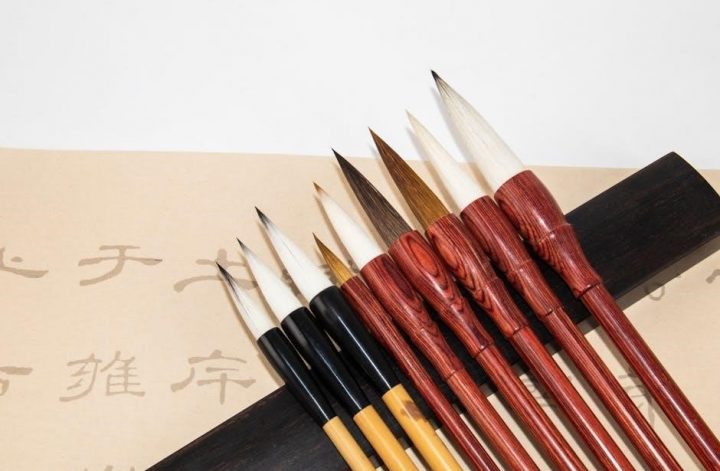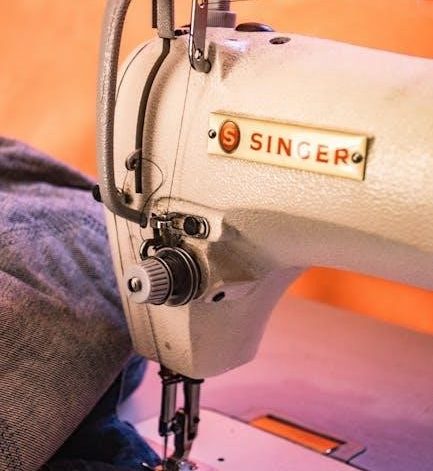The Original Slow Cooker Manual provides essential guidance for mastering your Crock-Pot‚ offering tips‚ safety precautions‚ and troubleshooting to ensure delicious‚ stress-free meals every time.
1.1 What is a Slow Cooker?
A slow cooker‚ often referred to as a Crock-Pot‚ is an electrical kitchen appliance designed for long‚ unattended cooking at low temperatures. It excels at preparing hearty dishes like stews‚ soups‚ and roasts. The cooker consists of a heating base and a stoneware insert‚ with a lid that traps moisture and flavors. Its low and high temperature settings allow for flexible cooking times‚ making it ideal for busy households. The slow cooker ensures tender results by breaking down tough ingredients over hours‚ while its enclosed design retains nutrients and aroma‚ resulting in flavorful meals with minimal effort.
1.2 Importance of Using a Manual
Using the original slow cooker manual is crucial for optimal performance and safety. It provides clear instructions for assembly‚ operation‚ and maintenance‚ ensuring users understand the appliance’s features and settings. The manual highlights essential safety guidelines‚ such as avoiding lid clamping and proper temperature usage‚ to prevent accidents. Additionally‚ it offers troubleshooting tips and care instructions to extend the cooker’s lifespan. By following the manual‚ users can unlock their slow cooker’s full potential‚ achieving perfectly cooked meals while minimizing risks. It serves as a comprehensive guide‚ helping both novices and experienced cooks make the most of their slow cooker.
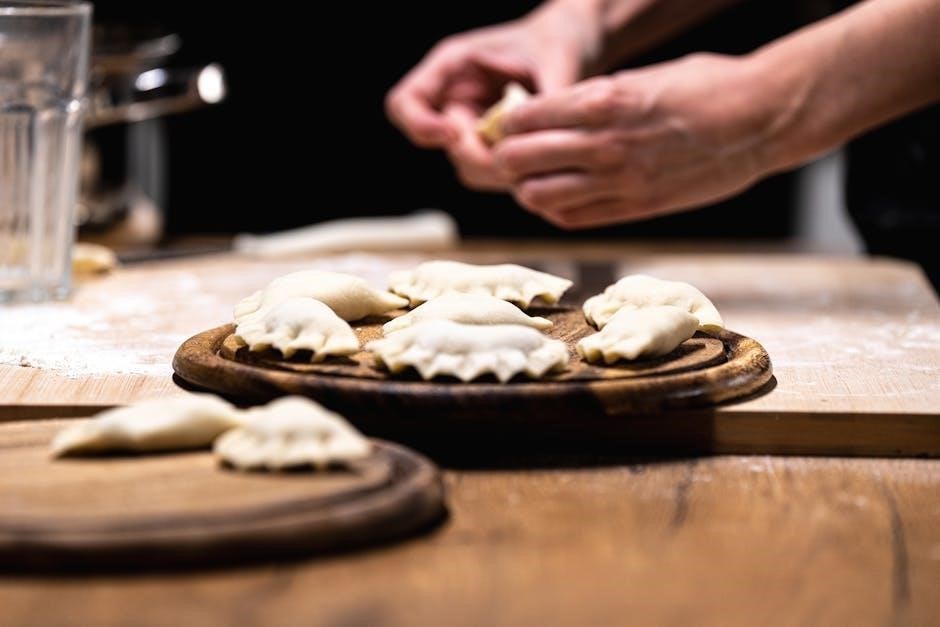
Components of the Original Slow Cooker
The original slow cooker consists of a stoneware insert‚ heating base‚ and lid‚ designed for even heat distribution and moisture retention‚ ensuring tender and flavorful cooking results.
2.1 Main Parts of the Slow Cooker
The original slow cooker features a stoneware insert‚ a heating base‚ and a secure-fitting lid. The stoneware insert is made of durable‚ heat-retentive material‚ ideal for slow cooking. The heating base contains the electronic controls and heating element‚ allowing for low‚ high‚ or warm temperature settings. The lid is designed to trap moisture and heat‚ ensuring even cooking. These components work together to provide consistent results and make meal preparation effortless. Proper maintenance of these parts is essential for optimal performance and longevity of the slow cooker.
2.2 Accessories and Additional Features
The original slow cooker often comes with accessories like a programmable timer‚ digital display‚ and a locking lid for easy transport. Some models include a multi-cooker function‚ allowing searing and sautéing directly in the pot. Accessories may also feature silicone mitts for safe handling and a recipe booklet for inspiration. These additions enhance the cooking experience‚ making the slow cooker versatile and user-friendly.
Optional features such as delayed start timers and automatic shut-off add convenience‚ ensuring meals are ready when you are. Expansion kits or specialized inserts further expand the cooker’s capabilities‚ catering to diverse culinary needs and preferences.
Assembly and Initial Setup
Begin by carefully unpacking and cleaning the slow cooker. Place the stoneware insert into the heating base‚ ensuring proper alignment. Plug in the unit and familiarize yourself with the controls for safe operation.
- Unpack all components and wash with mild soap.
- Dry thoroughly before first use.
3.1 Unpacking and Cleaning Before First Use
Start by carefully unpacking all components‚ including the stoneware insert‚ lid‚ and any accessories. Wash each part with mild soap and warm water to remove any manufacturing residue. Avoid using abrasive cleaners or scrubbers to prevent scratching the surfaces. Rinse thoroughly and dry with a clean towel. For tougher stains or odors‚ soak the stoneware insert in warm soapy water before washing. Ensure the slow cooker is completely dry before first use to prevent moisture buildup. This step ensures your slow cooker is clean‚ hygienic‚ and ready for safe operation.
3.2 Placing the Stoneware Insert
Gently lift the stoneware insert and position it into the heating base‚ ensuring it sits evenly and aligns with the base’s edges. Avoid twisting or forcing it into place‚ as this could damage the insert or base. Once properly seated‚ the insert should fit snugly without any gaps. Make sure the handle on the insert is facing outward for easy access. After placing the insert‚ lower the lid onto it‚ aligning the lid’s handles with those of the insert. This ensures a secure fit and proper heat distribution during cooking. Always handle the stoneware with care‚ as it may be heavy and prone to chipping if dropped. Proper placement is crucial for safe and efficient slow cooking.
Understanding the Temperature Settings
The slow cooker features Low‚ High‚ and Warm modes. Low cooks food gradually over 8-10 hours‚ while High accelerates cooking to 4-6 hours. Warm keeps dishes ready to serve at a safe temperature‚ ensuring food stays hot without overcooking. Properly using these settings ensures tender‚ evenly cooked meals. Always refer to the manual for specific guidelines tailored to your recipes.
4.1 Low‚ High‚ and Warm Modes Explained
The slow cooker offers three primary temperature settings: Low‚ High‚ and Warm. The Low mode is ideal for cooking over an extended period‚ typically 8-10 hours‚ perfect for tenderizing tough cuts of meat and infusing flavors gradually. High mode accelerates the cooking process‚ reducing time to 4-6 hours‚ making it suitable for quicker meals. The Warm setting keeps cooked food at a safe temperature‚ preventing overcooking while maintaining readiness for serving. These modes provide flexibility for various recipes and lifestyles‚ ensuring dishes are cooked evenly and safely. Always consult the manual for specific guidelines on choosing the right mode for your recipe.
4.2 When to Use Each Setting
Choose the Low setting for recipes requiring extended cooking‚ such as stews or roasts‚ ensuring tender results over 8-10 hours. The High setting is perfect for quicker meals‚ like soups or vegetables‚ cooking in 4-6 hours. Use the Warm setting to keep cooked dishes at a safe temperature‚ ideal for gatherings or buffets. Select Low for hearty‚ slow-cooked flavors‚ High for faster results‚ and Warm to maintain readiness without overcooking. Always refer to your manual for specific timing guidelines tailored to your recipe.

Safety Precautions
Always avoid clipping the lid‚ as it can cause overheating. Ensure food stays above 140°F to prevent bacterial growth. Follow manual guidelines for safe operation.
5.1 General Safety Guidelines
Always handle the slow cooker with care‚ as the stoneware and heating base can get extremely hot. Use oven mitts or tongs to avoid burns. Keep the appliance away from water and never submerge the electrical components. Ensure the slow cooker is placed on a stable‚ heat-resistant surface. Avoid clipping the lid‚ as it can trap steam and lead to overheating. Regularly check the cord for damage and avoid overloading the cooker. Keep children away from the appliance while it’s in use. Follow the manual’s instructions for preheating and cooking times to maintain food safety and prevent bacterial growth.
5.2 Avoiding Common Mistakes
Common mistakes to avoid include not reading the manual‚ overfilling the cooker‚ and improper lid handling. Never clip the lid‚ as it can trap steam and cause overheating. Refrain from opening the lid frequently‚ as it releases heat and extends cooking time. Avoid placing large pieces of food without submerging them in liquid‚ as this can lead to uneven cooking. Do not ignore the manual’s guidelines for temperature and time settings‚ as this can result in undercooked or overcooked meals. Always preheat ingredients if recommended and ensure the slow cooker is placed on a stable‚ heat-resistant surface. Following these tips will help you achieve consistent and delicious results.

Cooking Basics
Master the fundamentals of slow cooking by layering ingredients properly and ensuring adequate liquid for even cooking and enhanced flavors.
6.1 Adding Ingredients and Liquids
When adding ingredients to your slow cooker‚ start with a layer of aromatics like onions and garlic for added flavor. Browning meats before adding them enhances taste and texture. Layer vegetables and proteins to ensure even cooking. Liquids are crucial for moisture retention; use broth‚ water‚ or sauces‚ but avoid overfilling. Generally‚ 1-2 cups of liquid suffice unless specified. Season generously with spices and herbs‚ adjusting to taste. For tender results‚ place tougher cuts at the bottom and delicate ingredients toward the top. Always refer to the manual for specific liquid ratios to prevent undercooking or mushiness. Proper layering and liquid balance ensure a perfectly cooked meal every time.
6.2 Sealing the Lid Properly
Sealing the lid properly is essential for trapping heat and moisture‚ ensuring even cooking. Place the lid horizontally on the stoneware insert‚ aligning it with the heating base. Avoid forcing the lid down‚ as this could damage the slow cooker. Ensure the lid is tight but not over-tightened‚ as this may restrict venting. For optimal results‚ minimize lifting the lid during cooking‚ as this releases built-up heat and steam. Always handle the lid and base with oven mitts or tongs to avoid burns. A poorly sealed lid can lead to undercooked food or uneven heating‚ so double-check the alignment before cooking. Proper sealing ensures flavorful‚ tender meals every time.
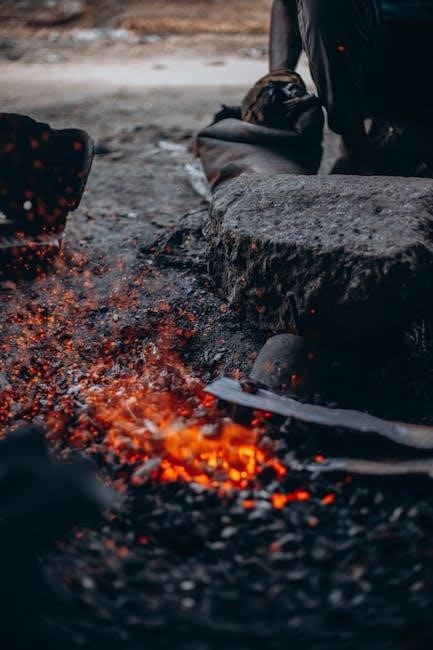
Maintenance and Care
Regularly clean the stoneware and base with mild soap and water. Avoid abrasive cleaners. Store the slow cooker in a dry place‚ ensuring all parts are secure.
7.1 Cleaning the Slow Cooker
Cleaning your slow cooker is essential for maintaining hygiene and performance. After each use‚ allow the unit to cool slightly before washing. The stoneware insert and lid can be washed with mild soap and warm water or placed in the dishwasher. For tough stains‚ soak the insert overnight. The heating base should be wiped clean with a damp cloth‚ avoiding abrasive cleaners or scrubbers. Never submerge the electrical base in water. Regular cleaning prevents food residue buildup and ensures your slow cooker continues to function optimally. Always refer to the manual for specific cleaning instructions tailored to your model.
7.2 Storing the Slow Cooker
Proper storage of your slow cooker ensures longevity and prevents damage. After cleaning‚ allow all parts to dry thoroughly before storing. The stoneware insert and lid can be stored separately or together‚ placed in a dry location. The heating base should be kept in a cool‚ dry place‚ away from direct sunlight. Avoid stacking heavy objects on the slow cooker to prevent scratching or cracking. For extended storage‚ consider placing the components in a protective cover or bag to shield them from dust. Always ensure the cord is neatly wound and secured to avoid tangling. Storing your slow cooker properly maintains its condition and ensures it remains ready for future use.
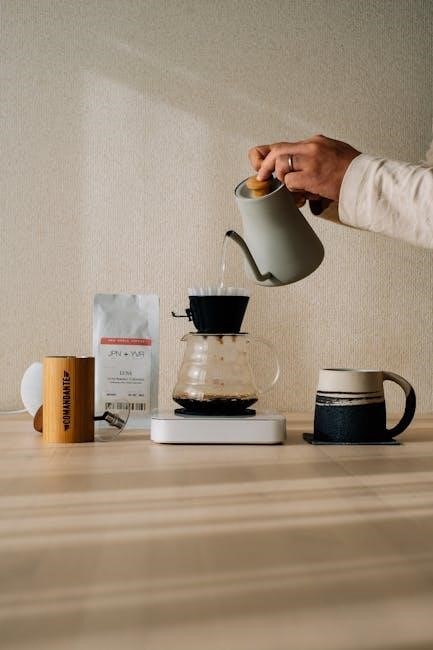
Troubleshooting Common Issues
Address common problems like uneven cooking or malfunctioning heating elements by checking power connections‚ ensuring proper lid sealing‚ and referring to the manual for detailed solutions.
8.1 Food Not Cooking Evenly
Uneven cooking can occur due to improper lid sealing‚ insufficient liquid‚ or incorrect layering of ingredients. Ensure the lid is tightly sealed to maintain consistent heat and moisture. If food isn’t cooking evenly‚ check that the stoneware insert is properly placed and that ingredients are distributed uniformly. Avoid overfilling the slow cooker‚ as this can disrupt air circulation. If issues persist‚ verify that the heating element is functioning correctly and that the temperature settings are appropriate for the recipe. Redistribute ingredients midway through cooking if necessary‚ and always preheat the slow cooker before adding food for optimal performance. Refer to the manual for specific troubleshooting steps tailored to your model.
8.2 Slow Cooker Not Heating Up
If your slow cooker isn’t heating up‚ first ensure it is properly plugged into a functioning electrical outlet. Check the power cord for any visible damage or tangles. Verify that the outlet is working by testing it with another appliance. Next‚ inspect the control panel to ensure it is functioning correctly and that the temperature setting is selected properly. If the issue persists‚ it may indicate a faulty heating element or a malfunction in the thermostat. Consult your manual for specific troubleshooting steps‚ as some models may have a reset option or thermal cutoff feature. If none of these solutions work‚ contact customer support or consider replacing the unit. Always prioritize safety when diagnosing electrical issues.

Advanced Tips for Slow Cooking
For enhanced flavor‚ marinate meats beforehand and brown them before adding to the slow cooker. Layering ingredients strategically ensures even cooking and optimal flavor distribution.
9.1 Layering Ingredients for Best Results
Layering ingredients in your slow cooker is key to achieving balanced flavors and textures. Start with larger cuts of meat or whole vegetables at the bottom for even cooking. Add aromatics like onions and garlic next to infuse flavors. Place tender vegetables and delicate ingredients toward the top to prevent overcooking. Season each layer with spices and herbs for depth. Always add liquids‚ such as broth or sauce‚ near the bottom to ensure even distribution. This method ensures that flavors meld together while maintaining the integrity of each component. For optimal results‚ brown meats and marinate vegetables before adding them to the slow cooker.
9.2 Timing Guidelines for Different Meals
Understanding the optimal cooking times for various meals is crucial for achieving the best results in your slow cooker. Generally‚ meats like chicken‚ beef‚ and pork cook well on low for 6-8 hours or high for 3-4 hours. Vegetables typically require 4-6 hours on low or 2-3 hours on high. Grains‚ such as rice or quinoa‚ cook quickly‚ often within 1-2 hours on high. Soups and stews benefit from longer cooking times‚ usually 8-10 hours on low or 4-6 hours on high. Always check for doneness by ensuring meats reach a safe internal temperature and vegetables are tender. Adjust times based on meal size and personal preference for texture and flavor. Proper timing ensures perfectly cooked meals every time.

Understanding the Manual Controls
The manual controls allow easy adjustment of cooking time and temperature‚ with low‚ high‚ and warm settings ensuring precise control over your cooking process.
10.1 Navigating the Control Panel
The control panel is designed to be user-friendly‚ featuring intuitive buttons for selecting modes‚ adjusting time‚ and setting temperature. The Mode button allows you to cycle through Low‚ High‚ and Warm settings‚ while the Timer button lets you adjust cooking duration in 30-minute increments. The digital display clearly shows the selected settings‚ ensuring easy monitoring. For precise control‚ use the Temperature button to toggle between heat levels. Always refer to the manual for specific model features‚ as some may include additional functions like delay start or multi-cooking options. Understanding these controls enables you to customize your cooking experience and achieve perfect results every time.
10.2 Adjusting Cooking Time and Temperature
Adjusting cooking time and temperature on your slow cooker ensures optimal results. The Low setting is ideal for 8-10 hours of cooking‚ while High reduces time to 4-6 hours. Use the Warm setting to keep food at a safe temperature without overcooking. To adjust‚ press the Timer button and use the +/- buttons to set your desired time. Toggle between modes using the Mode button. Ensure the lid is sealed properly to maintain even heat distribution. For delicate dishes‚ start with Low and switch to Warm if needed. Avoid frequent lid opening to prevent heat loss. Refer to the manual for specific temperature ranges and guidelines tailored to your model‚ ensuring perfectly cooked meals every time. Proper adjustments enhance flavor and texture‚ making every dish a success.
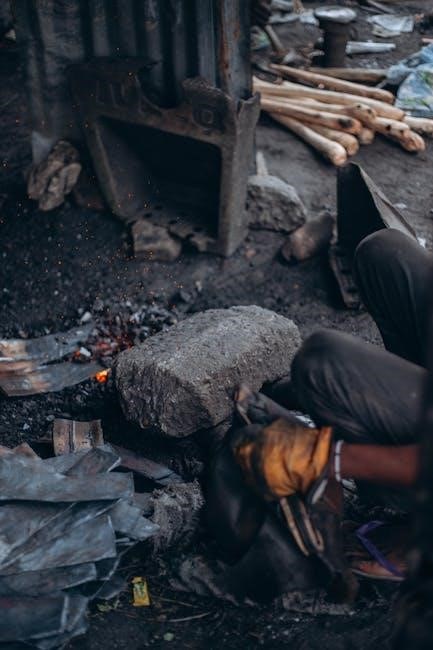
The Benefits of Slow Cooking
Slow cooking enhances flavor‚ retains nutrients‚ and tenderizes tough cuts of meat. It offers convenience for busy schedules and suits various dietary needs and preferences perfectly.
11.1 Health Benefits
Slow cooking offers numerous health benefits‚ making it a nutritious cooking method. It retains essential nutrients and vitamins in food‚ as ingredients are cooked gently over low heat. Tough cuts of meat become tender without added fats‚ reducing the need for oil. The closed-lid design prevents steam and nutrients from escaping‚ ensuring meals are flavorful and healthy. Slow cooking also breaks down connective tissues in meats‚ making them easier to digest. This method is ideal for preparing lean proteins and whole grains‚ supporting a balanced diet. Additionally‚ it minimizes the formation of harmful compounds associated with high-heat cooking‚ promoting better overall health. It’s a great way to enjoy wholesome‚ nutritious meals with minimal effort.
11.2 Time-Saving Advantages
Slow cooking is a game-changer for busy individuals‚ offering unparalleled convenience. Simply prepare ingredients in the morning‚ set the slow cooker‚ and return home to a fully cooked meal. This hands-off approach eliminates the need for constant monitoring‚ allowing you to focus on other tasks. The ability to cook meals over a long period makes it ideal for hectic schedules. Additionally‚ slow cookers are perfect for meal prep‚ as they can prepare large batches of food that can be refrigerated or frozen for later use. This method not only saves time but also reduces the stress of last-minute meal planning‚ making it a practical solution for modern lifestyles.

Capacity and Size Options
The Original Slow Cooker offers various sizes‚ from 3-quart to 7-quart models‚ catering to different serving needs‚ ensuring optimal cooking for small meals or large gatherings alike.
12.1 Choosing the Right Size for Your Needs
Selecting the appropriate size for your Original Slow Cooker ensures efficient cooking. A 3-quart model suits small households‚ while a 7-quart is ideal for large families or entertaining guests. Consider the number of servings and recipe requirements to avoid overfilling or underutilizing the cooker. Proper sizing enhances cooking performance‚ ensuring even heat distribution and food texture. Reference the manual for capacity guidelines to make an informed choice tailored to your lifestyle and needs.
12.2 Cooking for Large Groups
Cooking for large groups is made effortless with the Original Slow Cooker. Opt for a 7-quart model to accommodate big batches of dishes like stews‚ roasts‚ or chili. Layer ingredients evenly to ensure consistent cooking. Plan ahead‚ as larger quantities may require extended cooking times. Use the low setting for all-day preparation or high for faster results. Keep dishes warm with the “Warm” function‚ perfect for buffet-style gatherings. Ensure even heating by avoiding overcrowding. This appliance is ideal for feeding crowds‚ making it a must-have for entertainers and family events.

